Pulsetto vs Truvaga: Which Vagus Nerve Stimulator Should You Buy in 2025?
If you’re struggling with stress, poor sleep, or anxiety, vagus nerve stimulation (VNS) devices offer a science-backed, drug-free solution. But with several options on the market, choosing the right one can be overwhelming.
This comprehensive comparison of Pulsetto and Truvaga—two leading consumer VNS devices—will help you make an informed decision based on your specific needs and lifestyle.
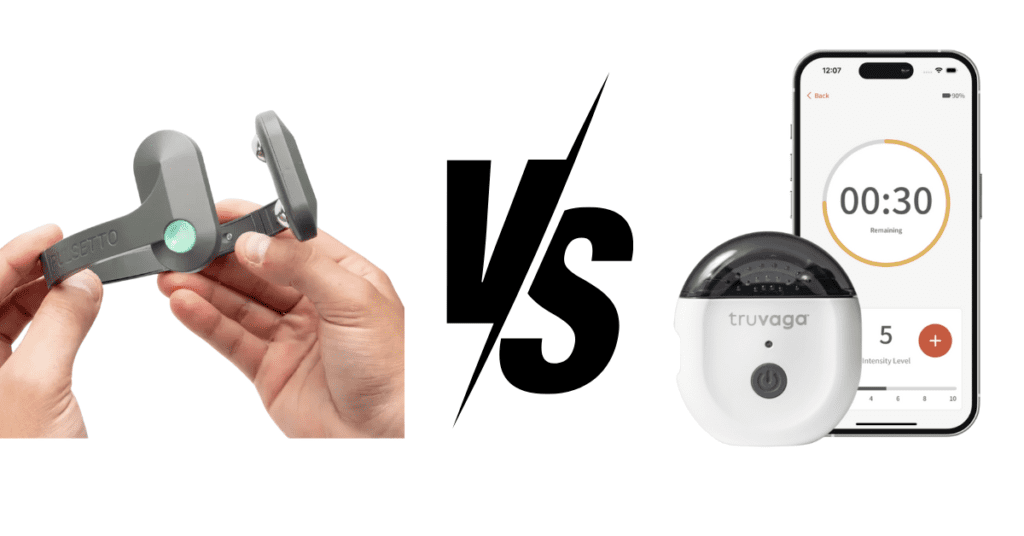
This post contains affiliate links.
Who Needs a Vagus Nerve Stimulator?
Before diving into the comparison, let’s identify if these devices might help you. Consider a vagus nerve stimulator if you:
- Struggle with chronic stress that affects your daily life or relationships
- Experience sleep issues like difficulty falling asleep or staying asleep
- Deal with anxiety symptoms such as racing thoughts or constant worry
- Have physical tension in your shoulders, jaw, or neck
- Feel “wired but tired” – exhausted but unable to relax
- Want a drug-free alternative to managing stress and improving sleep
- Are interested in biohacking for optimizing health and performance
Many users initially approach these devices with skepticism but find themselves pleasantly surprised by how quickly they notice improvements in relaxation and sleep quality. The simple daily ritual of using a vagus nerve stimulator becomes something many users actually look forward to.
Studies show that up to 43% of adults experience stress-related sleep issues, with many seeking alternatives to medication. Vagus nerve stimulation offers a scientifically-validated approach to addressing these common problems.
Understanding Vagus Nerve Stimulation: How It Works
The vagus nerve is your body’s major relaxation pathway, connecting your brain to various organs including your heart, lungs, and digestive system. It’s crucial for activating your parasympathetic nervous system—your “rest and digest” mode that counteracts stress responses.
Here’s what stimulating this nerve actually does:
- Reduces cortisol (stress hormone) levels, easing that constant ‘wired’ feeling
- Boosts heart rate variability (HRV), a key marker of how well your body handles stress
- Promotes deeper, more restorative sleep without medication
- Calms anxiety by soothing your overactive nervous system
- May improve digestion by optimizing gut-brain communication
- Can help with pain management for some users
Many users report measurable improvements in their HRV scores and reductions in resting heart rate after consistent use. Some wearable device users note increases of 10-15 points in HRV scores within the first week of use.
Both Pulsetto and Truvaga use gentle electrical stimulation to activate the vagus nerve through the skin, but they differ in their approaches, which we’ll examine in detail.
Quick Comparison: Pulsetto vs Truvaga
| Pulsetto | Truvaga Plus | |
|---|---|---|
| Price | $469 (currently $269) | $499 on Amazon |
| Design | Collar-style, hands-free | Handheld, manual placement |
| Stimulation method | Dual-sided (stimulates both branches simultaneously) | Single-sided (alternate sides) |
| App required | Yes, free basic app | Yes, free mobile app to control and schedule sessions |
| Session Length | 4-15 minutes | 2 minutes |
| Battery life | Several days with daily use | Several days with daily use |
| Additional costs | Conductive gel (inexpensive) | Conductive gel ($45) |
| Programs | 5 free programs (Sleep, Stress, Anxiety, Burnout, Pain) | Multiple programs via app interface |
| Premium options | Optional subscription at $15/mo after a 30 day free trial | All features included |
| HSA/FSA Eligible | Yes | Yes |
| Money-Back Guarantee | 30 Days | 30 Days |
| Warranty | 2 Years | Limited Warranty |
Pulsetto vs Truvaga: Design & Usability
Pulsetto Design
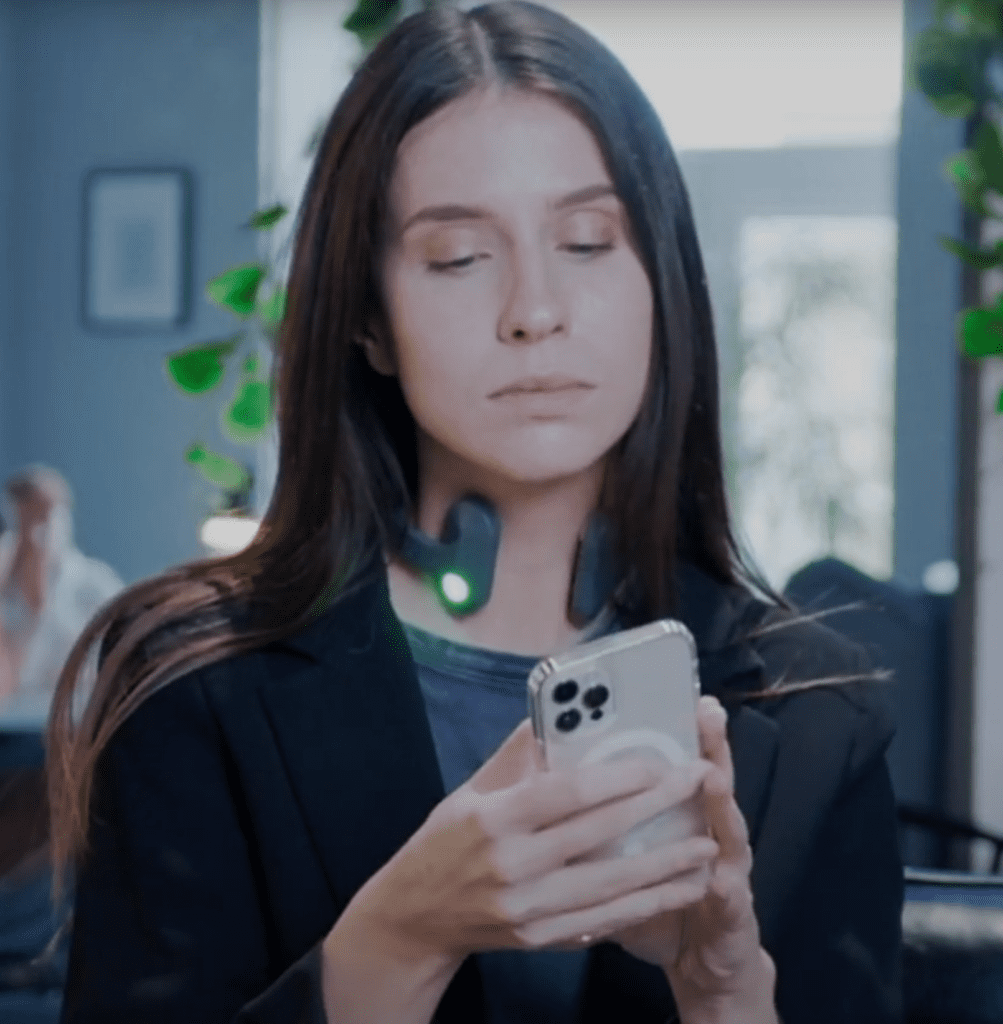
Pulsetto features a hands-free, collar-style design that wraps around your neck, targeting both vagus nerve branches simultaneously. This design allows you to:
- Multitask during sessions – read, sip tea, scroll your phone, or just relax
- Wear it comfortably with its lightweight construction (12.31 ounces)
- Set it and forget it for the duration of your session
- Use it easily with one-button operation and app control
Users consistently praise the convenience of being able to use the device while doing other activities or simply relaxing completely. The hands-free aspect is particularly valuable for bedtime use, as you can wind down with a book or meditation while the device works.
A bonus of the hands-free design is for accessibility, especially for those with hand mobility issues.
Truvaga Design
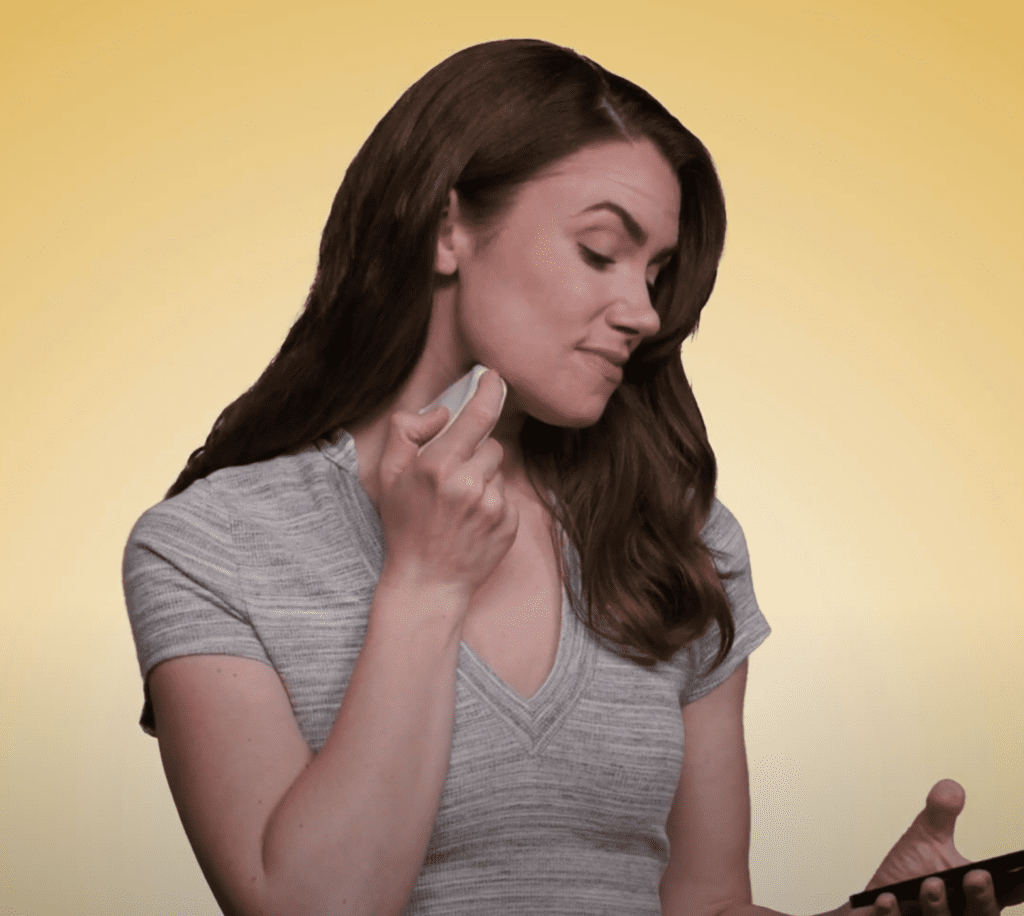
Truvaga Plus is a handheld device you press against specific points on your neck. This design offers:
- Precise control over placement for those who prefer targeting specific areas
- Compact size for portability
- Single-sided stimulation requiring you to switch sides mid-session
- Manual operation requiring you to hold the device in place
The key downside reported by users is that holding the device can prevent full relaxation during use, as you need to remain actively engaged with the device throughout the session.
Winner: Pulsetto (for hands-free convenience that helps with the relaxation experience)
Pulsetto vs Truvaga: Price & Value Comparison
Beyond just the sticker price, let’s take a look at the breakdown of total ownership costs:
Pulsetto Pricing Model
- Regular price: $469 (currently $200 off)
- What’s included: Device, starter conductive gel, USB-C charging cable, user guide
- Core features: 5 free unlimited stimulation programs accessible through the app
- Optional Premium: $15/month after 30-day free trial for guided sessions and custom programs
- Ongoing costs: Approximately $15 for gel replacement every 40 sessions (~$0.37/session)
- HSA/FSA eligible: Yes (save 30-40% with pre-tax dollars)
Truvaga Plus Pricing Details
- Regular price: $499
- What’s Included: Device, charging cable, bottle of conductive spray, quick start guide
- Programs: Multiple general wellness programs through app
- Ongoing Costs: $45 per gel replacement, a 50ml bottle lasts around 2 months
- HSA/FSA eligible: Yes
The price tag might seem steep at first, but many people find it’s worth it when they experience better sleep, less stress, and more energy day to day. When you consider what you might spend on other sleep aids or stress remedies over time, it starts to make a lot more sense.
Winner: Pulsetto (lower initial investment with comparable ongoing costs)
Pulsetto vs Truvaga: Real User Experience
The app and device integration makes a big difference in daily use:
Pulsetto Experience
- Seamless setup: The app guides you through device pairing and initial setup
- Hands-free operation: Use it while multitasking or just relaxing completely
- Simple intensity adjustment: Customize settings easily through the intuitive app
- Session variety: Choose from specific programs tailored to different needs
Some users report occasional Bluetooth connectivity issues, but many note responsive customer service when issues arise. The company appears to actively work on app improvements based on user feedback.
Truvaga Plus Experience
- Quick session time: Good for busy schedules
- Manual control: Some users prefer the tactile feedback
- Portable design: Easier to transport
However, some users find the manual operation cumbersome, as it requires actively holding the device while simultaneously managing settings in the app.
Winner: Pulsetto (for seamless app integration and hands-free operation)
Pulsetto vs Truvaga: Programs & Effectiveness
For Sleep Improvement
Sleep quality is one of the most commonly reported benefits in user reviews:
Pulsetto:
- Features a dedicated Sleep program (4750 Hz) optimized for bedtime use
- Users consistently report falling asleep faster and experiencing deeper sleep
- Many users describe transitioning from being “surface sleepers” to sleeping through minor disturbances
- Hands-free design allows you to use it while winding down in bed
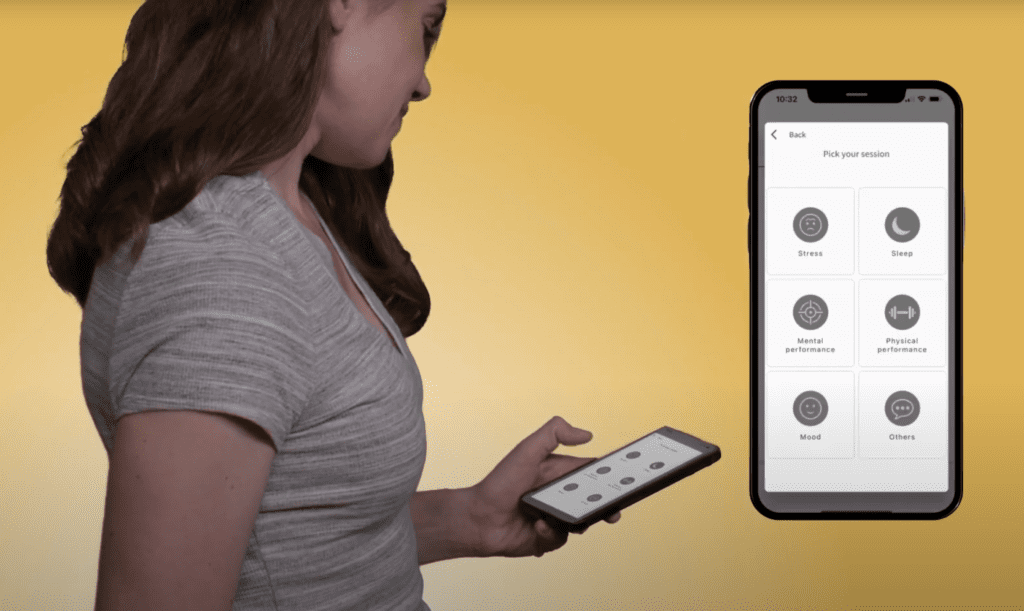
Truvaga Plus:
- Features a wellness-focused approach rather than sleep-specific programming (no set frequency as offered by Pulsetto)
- Offers shorter 2-minute sessions ideal for busy schedules or those who prefer briefer interventions
- Promotes “sleep better” benefits through its vagus nerve stimulation
- Uses the app’s scheduling and reminder features to help establish a consistent pre-sleep routine
For Stress Relief:
Both devices offer effective stress management, but with different approaches:
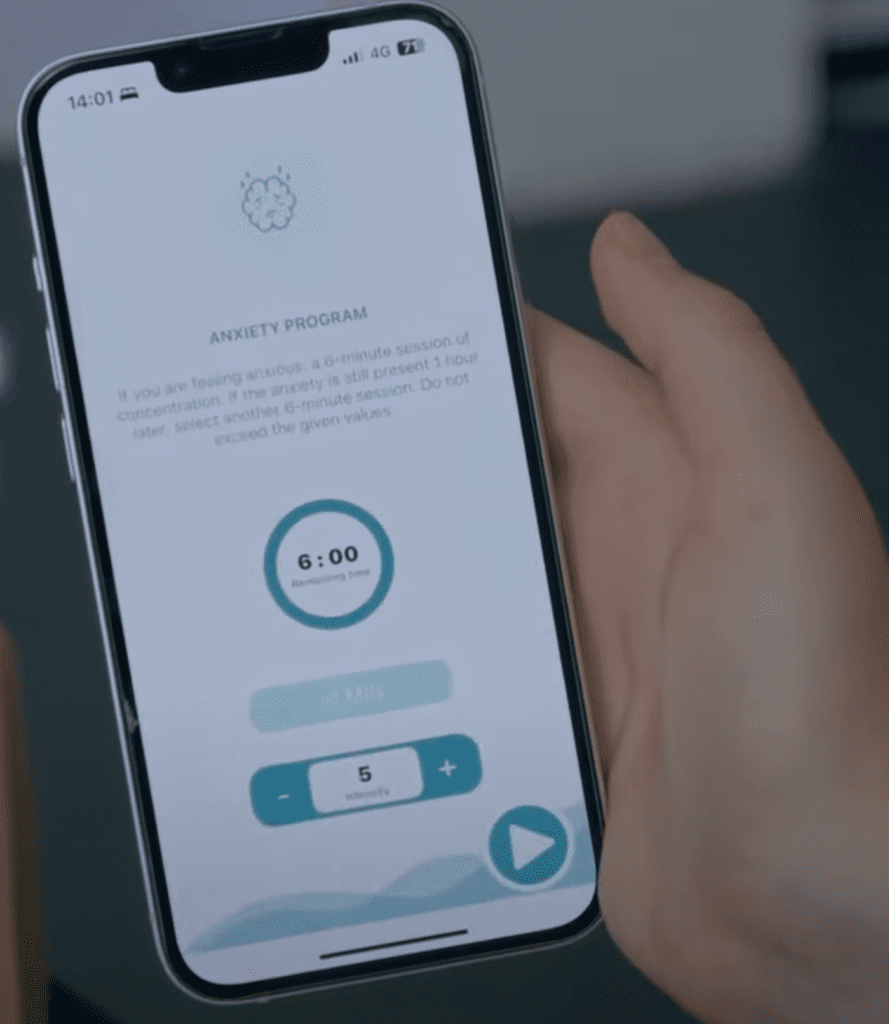
Pulsetto:
- Dedicated Stress (4500 Hz) and Anxiety (4750 Hz) programs
- Users report both immediate relaxation and cumulative benefits over time
- Many note improved focus and mental clarity after consistent use
- Hands-free design allows complete relaxation during sessions
Truvaga Plus:
- Brief 2-minute sessions deliver quick relief
- Some users find the stronger stimulation provides more immediate sensation
- Less specialized programming
- Good for quick stress intervention during a busy day
For Pain Management
An unexpected benefit reported by many Pulsetto users:
- Numerous accounts of relief from menstrual pain
- Reports of reduced shoulder and neck tension
- Some users find relief from headaches and migraines
- The dedicated Pain program (4900 Hz) appears to provide specific benefits beyond general relaxation
Winners:
- Sleep: Pulsetto (dedicated sleep program with consistent user results)
- Stress: Tie (depends on whether you prefer longer, hands-free sessions or quick interventions)
- Pain: Pulsetto (dedicated program with strong user testimonials)
What You’ll Actually Feel When Using VNS Devices
One of the biggest questions that comes up on using these devices is about the physical sensation of vagus nerve stimulation. The experience varies considerably between individuals and devices:
General VNS sensations:
- A gentle tingling or pulsing at the application site
- A slight “tugging” or pulling sensation in the muscles around your neck
- Mild facial muscle movement, particularly around the lips (often called “lip pull”)
- A warming sensation in some cases
- For some, an immediate calming effect; for others, a gradual relaxation
Intensity spectrum:
- At lower settings: Subtle sensations that may feel like gentle vibrations
- At medium settings: More noticeable muscle activation and tingling
- At higher settings: Stronger pulling sensations that can feel uncomfortable for some users
Important note on Truvaga: Some users report more intense initial sensations with Truvaga, including stronger facial muscle responses. A handful of users with sensitive nervous systems have described feeling temporarily “zoned out” or experiencing an unusually strong calming response that can feel disconcerting if unexpected. Start with the lowest possible setting.
Important note on Pulsetto: Pulsetto users generally report more gradual sensations, with most finding intensity levels 3-5 comfortable after an adjustment period. Some suggest starting at levels 1-2 with single-sided stimulation if you’re sensitive.
Tips for first-time users:
- Start with the lowest setting – you can always increase gradually
- Begin with shorter sessions than recommended (30-60 seconds) to see how your body responds
- If you feel uncomfortable, stop immediately and try again later at a lower setting
- Position is crucial – small adjustments can significantly change the sensation
- The sensations typically become more familiar and comfortable with consistent use
Users with anxiety, PTSD, or highly sensitive nervous systems should be particularly careful to start slowly, as the sudden shift from a chronically stressed state to relaxation can sometimes feel unusual or even alarming at first.
Who Should NOT Use These Devices
Both manufacturers recommend avoiding vagus nerve stimulators if you have:
- Pacemakers or other implanted electrical devices
- Active infections or skin issues on your neck
- Pregnancy (insufficient research on effects)
- History of seizures or epilepsy
- Sensitivity to electrical stimulation
Always consult with a healthcare professional before starting, especially if you have any health conditions.
How to Get the Best Results (Tips from Actual Users)
Here are key success factors from actual user experiences:
- Consistency is crucial: Most benefits build over time with regular use, typically twice daily.
- Proper placement matters: Position the electrodes over the carotid sinus (where you can feel your pulse on either side of your neck).
- Use the gel correctly: Apply enough to ensure good electrical conductivity without excess.
- Start with lower intensity: Begin at level 1-2, then gradually increase as you become comfortable.
- Try different programs: Experiment with various modes to find what works best for your specific needs.
- Schedule strategic sessions: Morning sessions can help with focus and energy; evening sessions support sleep.
- Be patient with results: While some effects are immediate, the full benefits often develop over 2-4 weeks of consistent use.
Pulsetto vs Truvaga: Overall Winner
| Pulsetto | Truvaga | |
|---|---|---|
| Price & Value | ★★★★★ | ★★★☆☆ |
| Design & Comfort | ★★★★★ | ★★★☆☆ |
| Ease of Use | ★★★★★ | ★★★☆☆ |
| Effectiveness for Sleep | ★★★★★ | ★★★☆☆ |
| Effectiveness for Stress | ★★★★☆ | ★★★★☆ |
| Pain Management | ★★★★☆ | ★★★☆☆ |
| Battery & Maintenance | ★★★★☆ | ★★★★☆ |
| Customer Support | ★★★★★ | ★★★★☆ |
| Overall (100 points) | 93/100 | 78/100 |
Why Pulsetto wins for most users:
- Hands-free design enhances the relaxation experience
- Dedicated programs for specific concerns
- Consistent positive feedback on sleep improvement
- Strong customer support when issues arise
- Better value, especially at current pricing
For those seeking a comprehensive, user-friendly solution for stress management and sleep improvement, Pulsetto offers the more complete package at a better price point.
Grab Pulsetto at $269—click here before the deal expires!
People Also Asked
What does a vagus nerve stimulator do?
A vagus nerve stimulator sends gentle electrical pulses to activate your vagus nerve, helping to calm your nervous system, reduce stress, and improve sleep. It boosts your body’s “rest and digest” mode to counter fight-or-flight responses.
Which vagus nerve stimulator is the best?
The best vagus nerve stimulator for most people in our opinion is Pulsetto. It’s a standout choice thanks to its hands-free design, which lets you use it while multitasking, and its five specialized programs for stress, anxiety, sleep, and more. Pulsetto is also budget-friendly, with a lower upfront cost—often reduced during promotions—and affordable gel replacements. Plus, it has a rechargeable battery for unlimited sessions and an app with free features (and optional premium upgrades).
Do vagus nerve stimulators really work?
Yes, vagus nerve stimulation has solid scientific backing.
Multiple studies show it can effectively regulate the autonomic nervous system, reduce stress markers, and improve HRV (heart rate variability). While consumer devices like Pulsetto and Truvaga use less intense stimulation than medical-grade devices, the growing body of user experiences supports their effectiveness for wellness purposes.
How quickly will I notice results?
User experiences vary considerably:
- Immediate effects: Many users report feeling calmer after their very first session
- Sleep benefits: Often noticed within the first few uses, with deeper and more consistent sleep
- Cumulative benefits: Stress resilience and mood improvements typically build over 2-4 weeks of consistent use
- HRV improvements: Some users tracking this metric report changes within 3-7 days
Does vagus nerve stimulation have any side effects?
Most users report no significant side effects. Some initial sensations to expect:
- Mild tingling or pulsing during use
- Possible facial muscle twitching if intensity is too high
- Temporary skin redness at contact points
Serious side effects are rare with consumer devices, but can include:
- Skin irritation from the gel
- Facial muscle spasms at high intensities
- Temporary hoarseness
Start with lower intensities and gradually increase to minimize discomfort.
Do vagus nerve stimulators work for stress?
Yes, vagus nerve stimulators like Pulsetto and Truvaga work for stress by activating the parasympathetic system to lower cortisol and promote calm. Pulsetto’s targeted Stress program makes it especially effective for ongoing relief.
Which is better for anxiety, Pulsetto or Truvaga?
Based on user feedback, Pulsetto appears more effective for anxiety due to:
- Its dedicated Anxiety program (4750 Hz)
- Hands-free design allowing complete relaxation
- Longer sessions that provide more sustained vagal tone improvement
Many users with anxiety report a notable reduction in racing thoughts and physical tension after establishing a regular usage routine.
What is the difference between Truvaga and Pulsetto?
Pulsetto offers a hands-free, dual-sided collar design with specific programs like Stress and Anxiety, while Truvaga Plus is a handheld, single-sided device focused on quick relief.
How often should I use a Pulsetto?
You should use Pulsetto daily for 4-15 minutes, depending on the program, with many finding once or twice a day—morning or evening—works best. Consistency is key for benefits like stress relief or better sleep.
Can Pulsetto help with specific health conditions?
While not marketed as medical devices, users report benefits for various conditions:
- Chronic stress: Consistent reports of improved resilience and recovery
- Migraines/headaches: Many report reduced frequency and intensity
- Tinnitus: Some users notice decreased ringing
- Digestive issues: Potential improvements through nervous system regulation
- Menstrual pain: Numerous reports of significant relief
Can I use a Pulsetto without a subscription?
Yes, you can use Pulsetto without a subscription—the free app includes five core programs like Stress and Sleep that work right out of the box. The optional $15/month premium subscription only adds extras like custom stimulations, but it’s not required.
What wearable device stimulates the vagus nerve?
Pulsetto is a wearable vagus nerve stimulator with a collar-style design that delivers hands-free stimulation to both nerve branches. Truvaga Plus, while handheld, also stimulates the vagus nerve but requires manual use.
What does an overstimulated vagus nerve feel like?
An overstimulated vagus nerve might cause dizziness, nausea, or a sudden drop in heart rate, though this is rare with consumer devices like Pulsetto or Truvaga. These effects typically stem from medical-grade stimulators, not wellness-focused ones.
Who should not use a Pulsetto?
Not everyone should use a Pulsetto. If you have certain conditions or devices, it’s best to steer clear unless a doctor says otherwise. Avoid Pulsetto if you have:
- Pacemakers or other implanted electrical devices—the stimulation might interfere.
- Active infections or skin issues on your neck where it’s worn.
- Pregnancy—there’s not enough research on its effects.
- A history of seizures or epilepsy—it could affect neural activity. Also, if you’re sensitive to electrical stimulation or don’t like devices on your neck, it might not be for you.
Always check with a healthcare professional before starting, especially if you have any health concerns.
What are the drawbacks of vagus nerve stimulation?
Drawbacks include potential skin irritation from gel, the need for regular recharging or gel replacement, and varying effectiveness depending on the person. Some may find devices like Truvaga cumbersome to hold or Pulsetto’s collar less discreet.
Final Thoughts: Is a Vagus Nerve Stimulator Worth It?
For those struggling with sleep issues, stress, anxiety, or looking for drug-free pain management, a vagus nerve stimulator represents a worthwhile investment in wellness. While neither device is inexpensive, the potential benefits—better sleep, reduced anxiety, less reliance on medications, improved daily function—often justify the cost.
Based on extensive analysis and direct comparisons, Pulsetto offers the better overall value and user experience for most people. Its hands-free design, dedicated programs, and strong user satisfaction make it our top recommendation.
The most common sentiment expressed by satisfied users is that they wish they had discovered vagus nerve stimulation sooner, suggesting that for many people, the benefits far outweigh the initial investment.
Get the Pulsetto Vagus Nerve Stimulator at the current discounted price here →
Related Articles
Health Disclaimer: The information provided in this article is for general informational purposes only and should not be considered medical advice. Vagus nerve stimulators, such as Pulsetto and Truvaga Plus, are wellness devices intended to support relaxation and overall well-being. They are not designed to diagnose, treat, or cure any medical conditions. Always consult a qualified healthcare professional before using any wellness device, especially if you have pre-existing health conditions, are pregnant, or have concerns about how stimulation may affect you. Individual results may vary, and these devices should not replace professional medical care or treatment.

